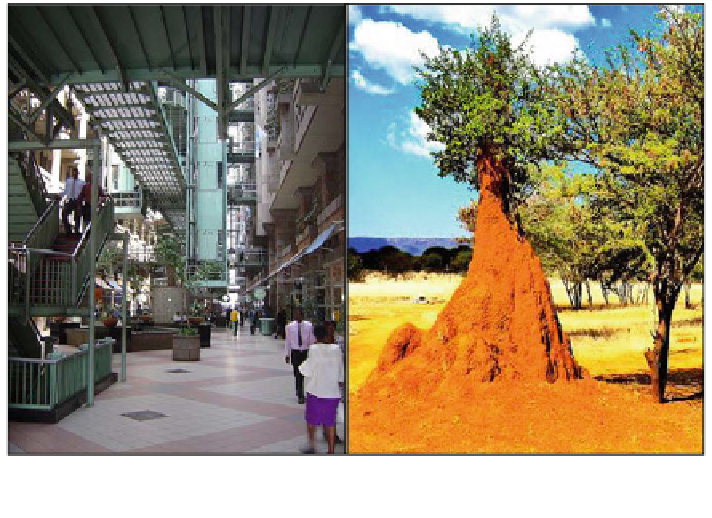Environmental Engineering Reference
In-Depth Information
Fig. 4.2 Eastgate building in Harare, Zimbabwe (Photo By: G. Bembridge) and termite mound
in Africa (Photo By: D. Siu)
regulate temperature than was previously thought. This has led to suggestions that a
new generation of 'living' biomimetic buildings could utilise a more accurate
understanding of the termite mound as a multi-purpose extension of termite
physiology more analogous to the function of lungs (Turner and Soar 2008).
Although Eastgate could be considered to be a successful building in terms of
energy efficiency and GHG emissions reduction, it is an example of how architects
and designers are able to use a metaphor of how organisms work without a full
understanding of the science behind the mechanism. This demonstrates the
importance of working with ecologists and biologists to avoid 'bio-mythologically-
inspired' design (Pawlyn
2011
, p. 78).
An example of a building which attempts to take advantage of this new under-
standing of termite mounds (but perhaps does not fully exploit it) is the 2006 Davis
Alpine House by Wilkinson Eyre, Dewhurst MacFarlane and Atelier Ten located in
Kew Gardens, London, England (Fig.
4.3
). The building was designed to avoid
energy intensive refrigeration typically needed for the display of alpine plants, and
instead uses a stack effect to cool the interior passively, while essentially remaining a
glass house with high rates of air circulation (Pawlyn
2011
, pp. 87-88). A removable
shading sail is included in the design to prevent too much sunlight reaching the
plants. The stack effect is enhanced through the high internal space created by
the double arches, sequential apex venting as temperature increases, by vents at the
bottom of the glass structure, and through a Barossa termite inspired decoupled
thermal mass labyrinth below the building. The concrete block labyrinth is set
between a double concrete slab that also acts to resist the forces exerted by the

Search WWH ::

Custom Search